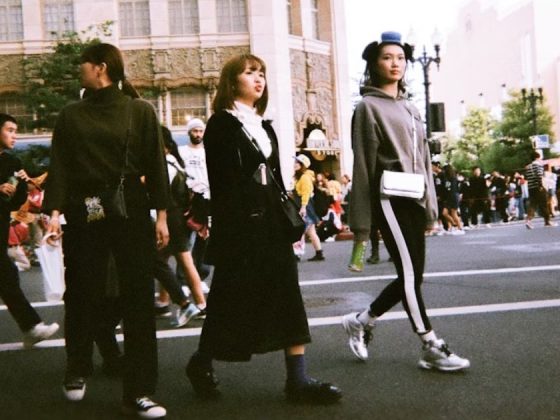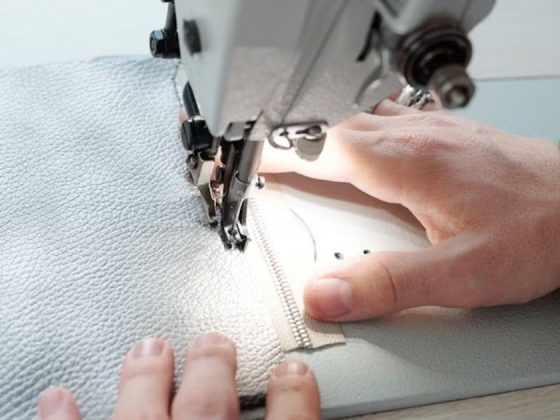In an era where climate anxiety is on the rise and global citizens are becoming increasingly aware of their environmental impact, a shift is underway in one of the world’s most polluting industries: the fashion sector. For decades, “fast fashion” has dominated the global fashion scene, offering runway trends at affordable prices and rapid turnaround times. However, as landfills fill with last season’s discarded outfits and headlines expose exploitative labor practices, a new movement is emerging: slow fashion. And contrary to its name, slow fashion is sparking fast growth, not just in terms of market traction but also in cultural relevance and consumer loyalty.
What Is Slow Fashion?
Slow fashion isn’t just a buzzword or a reaction to fast fashion—it’s a conscious approach to clothing rooted in quality, ethics, and sustainability. It’s a comprehensive approach to clothing production, purchase, and use that prioritizes sustainability, ethics, and longevity. It encourages thoughtful purchasing decisions, emphasizes quality over quantity, and champions transparency in the supply chain.
From sourcing eco-friendly fabrics to advocating for fair wages and safe working conditions, slow fashion brands strive to create garments that are both physically durable and timeless in design. The goal? To reduce waste, improve the lives of workers, and promote a healthier planet.
The Problem with Fast Fashion
A critical examination of fast fashion reveals significant issues beneath its flashy, fast-paced exterior. The model relies on rapid production and high volumes, creating large quantities of inexpensive, trendy clothing that replicates the latest runway styles. This approach fuels continuous consumer demand for new items, perpetuating a cycle of overproduction and overconsumption. However, this convenience comes at a significant cost, affecting both the planet and the people behind the production.
One major consequence is the enormous amount of waste generated. Clothing purchase speed and volume—producing massive quantities of affordable, trendy clothing that mirrors the latest runway styles. The goal? Keep consumers hooked on the newest look, driving them to buy more, more, and then some more. It’s a high-speed cycle of overproduction and overconsumption, but this convenience comes with a hefty price tag, both for people and the planet.
One of the most glaring issues is that the amount of clothing produced has increased by approximately 60% over the past 15 years, while the lifespan of just one of these garments has decreased by nearly half. The result is vast quantities of discarded textiles accumulating in landfills or being incinerated, contributing to environmental pollution and a growing waste crisis.
The environmental impact extends further. The fashion industry ranks among the top consumers of freshwater worldwide, using thousands of gallons to produce a single cotton shirt. It also generates around 10% of global carbon emissions, exceeding the combined output of international flights and maritime shipping. The widespread use of toxic dyes and synthetic fibers releases harmful microplastics, contaminating waterways and soil.
The human cost is equally severe. Production is often outsourced to regions, outpacing even international flights and shipping combined. Add to that the heavy use of toxic dyes and microplastics from synthetic fabrics, and you have a cocktail of pollution infiltrating waterways and soils.
The human cost is just as dire. Many fast fashion brands outsource to countries with limited labor protections and lax labor laws, where workers often endure long hours, unsafe working conditions, and wages that are insufficient for maintaining a basic standard of living. This exploitation is masked by low prices and eager paychecks, barely enough to survive. This exploitation is hidden behind bargain prices and aggressive marketing, obscuring the true expense behind “cheap” clothing.
The disposable nature of fast fashion has shifted clothing from valued possessions to transient commodities. Garments are frequently treated as temporary and replaceable rather than durable and meaningful. The environmental degradation, social injustices, and erosion of craftsmanship associated with fast fashion underscore the urgent need for a transition toward slow, conscientious fas “iony “marketing, making the true cost of “cheap” fashion painfully clear.
This throwaway mentality has transformed clothing from something valuable and cherished into disposable commodities. Garments are often treated as temporary, fleeting, and easily replaceable rather than as meaningful pieces built to last. The environmental degradation, social injustices, and loss of craftsmanship embedded in fast fashion highlight why a shift toward slow, thought “ul fa” hion isn’t just preferable—it’s necessary.
The Philosophy Behind Slow Fashion
Slow fashion is often mistaken for plain or uninspired clothing, but it fundamentally represents a thoughtful and joyful connection to apparel. This philosophy challenges the rapid, disposable nature of conventional fashion, advocating for a slower, more intentional approach to clothing consumption.
Central to this approach is the principle of buying less and choosing better, prioritizing quality over quantity. Instead of accumulating numerous items tied to fleeting trends, slow fashion promotes investment in durable, timeless pieces designed to endure beyond seasons. Emphasis is placed on valuing craftsmanship and materials, with each garment reflecting a unique story.
Supporting ethical brands is a key aspect of slow fashion, which involves a preference for companies that maintain transparency regarding labor practices, ensure fair wages, and minimize their environmental impact. Such support contributes to a more equitable and sustainable fashion industry.
The philosophy also encourages repairing and repurposing clothing—mending seams, patching holes, or creatively transforming old garments. This practice extends the life of clothing, reduces waste, and nurtures creativity.
Education forms the foundation of slow fashion awareness, encompassing knowledge of materials, production processes, and the true costs embedded in garments. This understanding fosters mindful consumption and respect for both the makers and the environment.
In essence, slow fashion cultivates a culture of mindfulness and gratitude, establishing a respectful relationship between clothing, its creators, and the natural world. It shifts fashion from impulsive buying to a purposeful, sustainable way of living.
Slow Fashion Goes Global
Slow fashion is gaining momentum worldwide. In cities like Copenhagen, Amsterdam, and Melbourne, sustainable fashion weeks are drawing attention to eco-conscious designers. Meanwhile, fashion hubs such as New York and Paris are seeing traditional designers shift toward slower, more ethical production cycles.
Countries across Asia, including India and Japan, are drawing on their textile heritage to support the ideals of slow fashion. Traditional crafts, such as handloom weaving, natural dyeing, and zero-waste patterns, are not only being preserved but also celebrated on international runways.
The internet has played a crucial role in accelerating the slow fashion movement. Digital platforms make it easier for small, sustainable brands to reach global audiences. Influencers and fashion bloggers are using their platforms to promote conscious consumerism and debunk the myth that sustainable fashion is unaffordable or unstylish.
The Business Case for Slow Fashion
Slow fashion may seem incompatible with growth. After all, how can a business succeed if it’s encouraging people to buy less?
The answer lies in redefining growth. Rather than measuring success solely by volume of sales, slow fashion brands prioritize customer loyalty, product longevity, and ethical practices. And it’s working:
- Premium Pricing: Consumers are willing to pay more for quality items that last longer and are made responsibly.
- Brand Loyalty: Ethical values foster trust and repeat customers who become brand advocates.
- Diversified Revenue Streams: Brands are expanding into services such as repairs, rentals, and resale, creating new profit opportunities.
- Regulatory Readiness: As governments tighten environmental and labor regulations, slow fashion brands are ahead of the curve.
Big names like Patagonia, Eileen Fisher, and Stella McCartney have built entire business models around sustainable and ethical practices, proving that profit and purpose can coexist.
Fast Growth
While the broader fashion industry is experiencing steady growth of 4-5% annually, the sustainable fashion sector is accelerating at a rapid pace as if on a mission. Recent market research projects the global ethical fashion market to soar to a staggering $8.3 billion by 2027, expanding at an impressive compound annual growth rate (CAGR) of 9.7%. That’s nearly double the pace of traditional fashion growth—a clear sign that sustainability isn’t just a trend; it’s reshaping the entire industry landscape.
What’s driving this shift? Consumer attitudes have undergone a radical transformation. The momentum is statistically strong among Gen Z and Millennials—the powerhouse generations that now dominate the market. These consumers aren’t just window-shopping; they are actively seeking out brands that align with their values, prioritizing sustainability in their purchasing decisions.
This consumer passion translates into real business results. Brands that communicate authentic, transparent sustainability efforts enjoy significantly higher engagement rates and rapidly growing social media followings. The message is unmistakable: ethical fashion strikes a powerful chord, fostering strong brand loyalty and fueling consistent sales growth.
In sum, these numbers make one thing crystal clear—slow fashion is not a fleeting niche or a fad. It’s a powerful cultural and economic force that’s rewriting the rules of the fashion industry, proving that style and sustainability can coexist while reshaping consumer expectations for the better.
Challenges and Criticisms
Of course, slow fashion isn’t without its hurdles. Accessibility remains a key concern. Sustainable clothing frequently carries a higher price point, posing a barrier to accessibility for many consumers. Additionally, there is a need for more inclusivity, gender-neutral designs, and cultural representation within slow fashion lines.
Greenwashing—when brands exaggerate or falsify their sustainability efforts—also threatens the integrity of the movement. As more companies join the sustainability bandwagon, transparency and third-party certification will be crucial for maintaining consumer trust.
Lastly, shifting there takes time. For decades, consumers have been trained to expect low prices, instant gratification, and ever-changing trends. Undoing this cultural conditioning requires not just awareness but also creative storytelling, community engagement, and education.
The Future of Fashion
Slow fashion marks a significant paradigm shift, replacing disposable trends with values such as longevity, ethics, and sustainability. As climate change accelerates and social justice movements gain momentum, the demand for accountability across all industries, including the fashion sector, will intensify.
Innovations in textile science (like lab-grown leather and biodegradable fabrics), circular business models (resale, rental, upcycling), and collaborative economies (clothing swaps, peer-to-peer marketplaces) will further transform the industry. Meanwhile, emerging designers from underrepresented communities are bringing fresh perspectives and championing sustainability from a place of cultural pride.
In the future, success in fashion won’t be measured by how quickly trends are churned out but by how thoughtfully a brand operates. Storytelling, transparency, and purpose will be as important as aesthetics and affordability.
Redefining Fashion, Rethinking Progress
Slow fashion goes beyond trends—it’s a deep shift in mindset toward mindful, sustainable choices. It challenges conventional definitions of growth and success by prioritizing intention, longevity, and sustainability over speed and convenience. In an age dominated by instant gratification, adopting a slower approach represents a deliberate and impactful shift.
This shift continues to gain momentum. The rise of slow fashion reflects not only an industry response but a broader cultural evolution, marked by increased awareness, environmental stewardship, and value-driven consumption. Growth, in this context, is measured through ethical progress, ecological mindfulness, and lasting impact rather than rapid expansion.
The transformation prompted by slow fashion reaches beyond clothing. It reshapes perceptions of value, purpose, and progress, redefining fashion as a tool for meaningful change.














